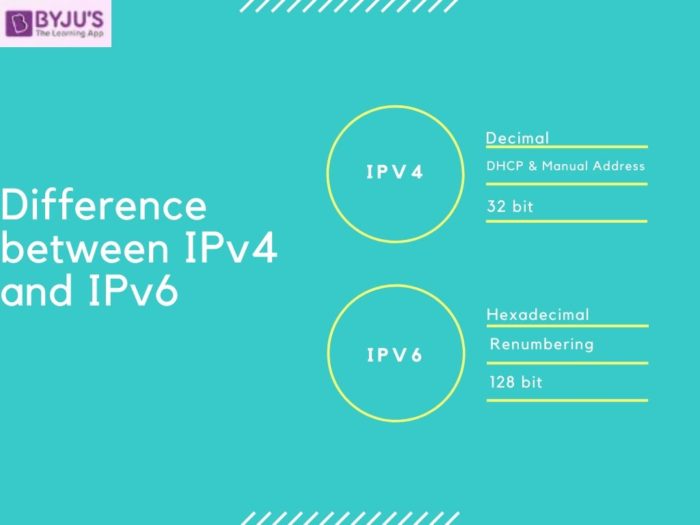How to Get the Most Out of https://acortaz.eu/ipv4-e-
Introduction to IPv4 and IPv6
In the ever-evolving world of technology, understanding the backbone of internet connectivity is crucial. Enter IP addresses—your unique identifiers in the vast digital landscape. While IPv4 has long been a staple, IPv6 is swiftly becoming essential as we push toward a more connected future. But what do these terms really mean for you and your organization?
This guide will delve into the key differences between these two protocols, highlight why shifting to IPv6 is beneficial, and address some challenges that come with its implementation. Plus, you’ll discover practical tips on leveraging resources like https://acortaz.eu/ipv4-e-ipv6-comparacionto enhance your knowledge and optimize your approach to IP management.
Stay with us as we navigate this critical aspect of modern networking!
Key Differences Between IPv4 and IPv6
IPv4 and IPv6 represent two generations of Internet Protocol, each with unique characteristics.
IPv4 uses a 32-bit address scheme, allowing for about 4.3 billion unique addresses. This was ample in the early days of the internet but has become insufficient due to explosive growth.
On the other hand, IPv6 employs a 128-bit address format. This upgrade permits an almost unimaginable number of addresses—around 340 undecillion! The vast increase resolves many issues stemming from IPv4 exhaustion.
Another key difference lies in configuration. While IPv4 often requires manual setup or DHCP for dynamic addressing, IPv6 supports auto-configuration through Stateless Address Autoconfiguration (SLAAC), simplifying network management.
Security is also enhanced in IPv6 with built-in IPsec support, whereas it’s optional in IPv4. These foundational differences highlight how both protocols serve different needs as technology evolves.
Benefits of Using IPv6
IPv6 offers a plethora of advantages that address the limitations faced by its predecessor, IPv4. One significant benefit is the vastly expanded address space. With 128-bit addresses, IPv6 can support an almost infinite number of devices.
This capacity is crucial as our world becomes increasingly interconnected. The Internet of Things (IoT) thrives on having unique IP addresses for each device, and IPv6 provides just that.
Moreover, IPv6 streamlines network configuration through features like auto-configuration. This eliminates cumbersome manual processes, making it easier for devices to join networks seamlessly.
Security enhancements are another highlight. Built-in IPsec in IPv6 promotes secure communication between connected systems right from the start.
Better multicast routing capabilities improve bandwidth efficiency when delivering data to multiple users simultaneously. These benefits make adopting IPv6 not only practical but essential in today’s digital landscape.
Challenges of Implementing IPv6
Implementing IPv6 presents several challenges that organizations must navigate carefully. One of the primary obstacles is the need for extensive infrastructure upgrades. Many existing systems may not support IPv6, requiring significant investment in new hardware and software.
Another challenge lies in staff training. Teams accustomed to IPv4 may struggle with the complexities of IPv6 addressing and configurations. This knowledge gap can lead to errors during deployment, which can be costly.
Compatibility issues also arise when trying to maintain interoperability between both protocols. Transitioning smoothly while ensuring seamless communication across networks requires careful planning.
There’s often resistance to change within organizations. Stakeholders might hesitate due to perceived risks or a lack of understanding about the benefits of making such a shift. Addressing these concerns is crucial for successful implementation without disrupting operations.
Tips for Maximizing the Benefits of https://acortaz.eu/ipv4-e-
To make the most of https://acortaz.eu/ipv4-e-ipv6-comparacion, start by diving into its detailed comparisons. Understanding each protocol’s unique features will help you assess your organization’s needs.
Leverage the resource to identify potential migration paths from IPv4 to IPv6. This can streamline your transition and improve network efficiency.
Engage with community discussions linked on the site. Sharing insights with peers can enhance your understanding and provide practical solutions for common challenges in implementation.
Regularly revisit the website for updates as technology evolves. Staying informed ensures that you are always aligned with best practices in IP management.
Consider applying tools or services suggested on the platform that facilitate monitoring and managing your IP addresses effectively. This proactive approach keeps your network running smoothly while maximizing performance benefits.
Understanding the Importance of IP Address Management
Effective IP address management is crucial in today’s digital landscape. With the rapid growth of connected devices, having a clear strategy for managing IP addresses can streamline operations and enhance security.
An efficient IP address management system helps prevent conflicts between devices. It ensures that each device on your network has a unique identifier, eliminating downtime due to overlapping addresses.
Moreover, proper management aids in compliance with regulations. Organizations must track their IP usage for audits and reporting purposes. This transparency builds trust with stakeholders and regulators alike.
As networks evolve, so do the demands placed on them. Understanding how to manage IPv4 and IPv6 addresses allows businesses to scale efficiently while optimizing performance.
Investing time into robust IP address management pays dividends in reliability and functionality across all facets of your network infrastructure.
Conclusion
Understanding the transition from IPv4 to IPv6 is crucial in today’s digital landscape. As we navigate this evolution, it becomes increasingly important to grasp the differences and benefits that come with adopting IPv6.
IPv4 has served us well for decades, yet its limitations are becoming evident. In contrast, IPv6 offers a robust solution designed for modern internet demands, making IP address management more efficient and sustainable.
The shift to IPv6 may pose challenges; however, the rewards far outweigh these obstacles. The potential for enhanced connectivity and security opens doors to innovations that can transform how we interact online.
By utilizing resources like https://acortaz.eu/ipv4-e-ipv6-comparacion effectively, you can deepen your understanding of these protocols. Embrace best practices and stay informed on developments within IP technology.
As networks continue expanding globally, staying ahead of both trends and tools will be essential in harnessing the full power of our interconnected world.


